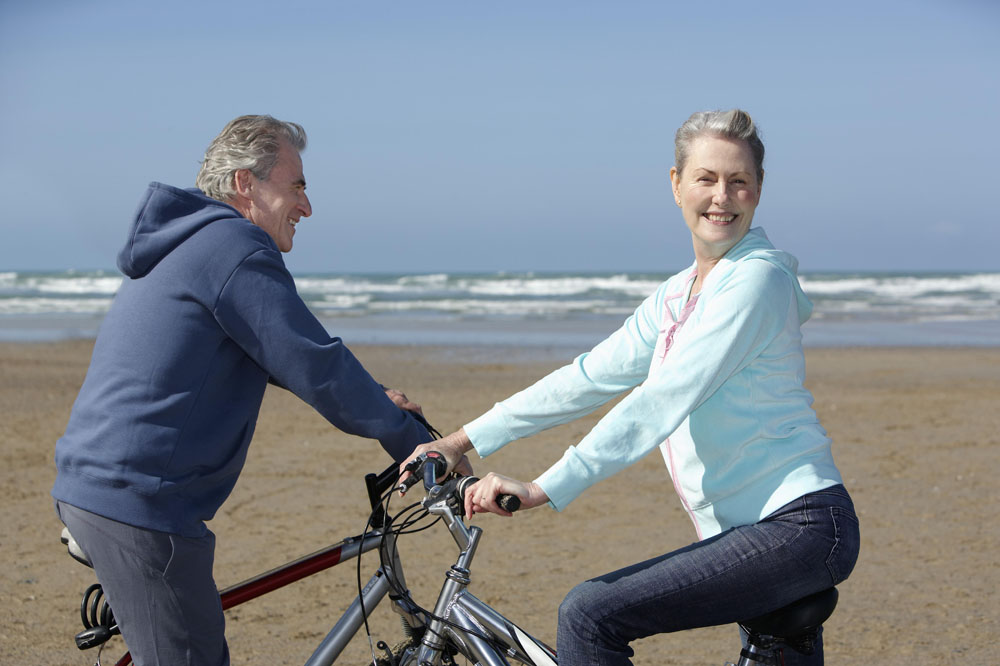10 Ways to Protect Your Joints in Winter
Update time : 2016-11-15 10:00:00

Osteoarthritis, the most common type of arthritis, is often considered a normal part of aging. Usually, by age 40, but as the living habits affact, this symptom appears before this age. Our joints — especially the weight-bearing ones, like lower spine, hips, knees, ankles and feet — begin to show signs of wear and tear. The cartilage thins, joint surfaces are not as smooth, and the fluid that lubricates the joints becomes diluted, dehydrated and less protective. These aging joints become stiff, sore, weak and sometimes swollen.
Most people with osteoarthritis report additional pain and stiffness in the winter and early spring because of cold, damp weather — of which Northeast Pennsylvania has plenty. The cold, for example, restricts the flow of blood to the joints, leading to more pain and stiffness. Moving to a warmer and less humid climate is one solution, but it’s not practical for most. Fortunately, there are other ways to protect your joints at this time of year.
■ Parafin bath and hot packs: A paraffin bath is one of the best methods to apply heat to your hands and feet to ease the pain and stiffness of osteoarthritis. A special heating unit works like a crockpot to melt the wax. The hands or feet are dipped into the wax several times to create a warm coating around the entire area. A 20- to 30-minute treatment, while watching TV or listening to music, will provide pain relief, improve mobility in the joints and restore life to winter-damaged skin.
Hot packs, electric or microwavable, are great for neck and lower-back pain, depending on the shape of the pad — consider rectangular lower back and cylindrical/round for the neck, arms and legs.
■? Hand and toe warmers: These small, disposable packets are placed in the gloves or boots of skiers, campers and hikers to keep the hands and feet warm. They also can be used by anyone with cold hands or feet, whether you’re shoveling snow, attending an outdoor event in the cold or sitting in a cold, drafty room watching TV.
■? Knee, ankle, wrist, elbow sleeves: Supportive sleeves for the joints can provide protection and warmth all year, but especially during the cold winter and early spring. Those made with neoprene offer warmth and compression and can be valuable when participating in activities. They also can be helpful for those suffering joint pain with daily activities. These devices should not be used when sitting for long periods of time or sleeping.
There is no scientific evidence that supports the use of copper or magnets weaved into the sleeves for additional pain relief.
■? Compression shorts and shirts: Similar to neoprene sleeves, compression shorts, pants and shirts can be invaluable to those participating in outdoor activities in cold weather. Under Armour, Reebok, Nike and others make these products, which can also be worn indoors by those working in cool, drafty environments.
■? Hot tub: It seems obvious how and why hot water and massaging water jets can soothe the sore joints and muscles. To ensure additional relief of pain and stress, add a candle, soft music and a cocktail.
■? Low-impact exercise for legs: If you suffer from osteoarthritis in the joints of your lower body, it’s best to limit impact activities like running and basketball. Instead, walk, swim, or use an elliptical or bike to protect your joints.
■? Low-impact exercise for arms: If you have arthritis in the joints of the upper body, use light weights, and avoid push-ups and dips, which transfer body weight through your arms.
■? Nonsteroidal anti-inflammatory drugs: These over-the-counter, nonprescription drugs include aspirin and ibuprofen (Advil, Motrin), which are very effective in the treatment of the pain and inflammation associated with arthritis. Like all drugs, NSAIDs are not without risks — for example, they can thin the blood, irritate the stomach and interact with other medications — so consult your physician and pharmacist before using them.
■? Topical creams (lidocaine, capsaicin): Topical analgesics or pain relievers can be rubbed into or sprayed on the skin over the affected area. Some products are counterirritants using menthol, methyl salicylate or camphor. Salicylate-based products work like aspirin to provide relieve from mild pain and inflammation. Capsaicin-based products can also provide temporary relief through the stimulation of warmth and tingling.
A few things to keep in mind when using these products: Discuss it with your physician or pharmacist; topical agents are more effective in superficial joints, like the fingers, toes, wrist, elbow, knee and shoulder, than in the deep tissues of the hip, buttocks or lower back; wash your skin thoroughly after using these products and before using heat, cold or electric stimulation.
■? Massage: The therapeutic benefits of massage are well documented, but it’s important to find a qualified professional who meets your needs. Licensed physical therapists, therapist assistants and massage therapists are the best choices. Benefits include relief from pain, headaches, muscle spasms and stress, and improved relaxation, posture and breathing.



